This S’porean startup is fighting fashion waste with lab-grown leather
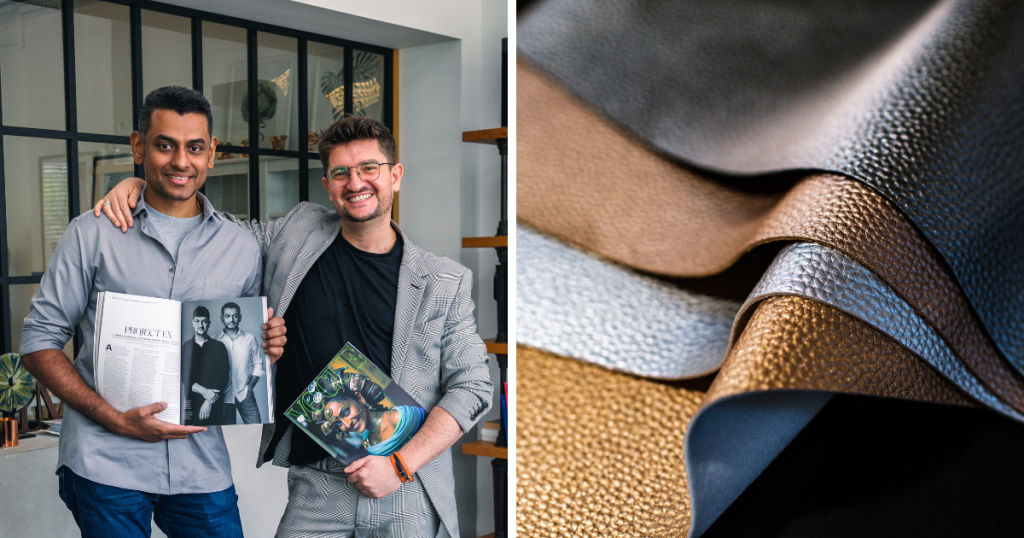
The use of leather in fashion has long been criticised. Animal cruelty and environmental damage – caused by chemicals used in leather processing – are two of the key reasons why the material is discouraged.
Substitutes such as faux leather have proven to be harmful as well. Their production often involves the use of plastics which are not biodegradable and release harmful toxins upon disposal. Other natural alternatives – such as leather made with pineapple skins or apple peels – have done better for the environment but often fallen short in terms of quality.
One of the most recent solutions to this problem is lab-grown leather. Dating back to 2012 – when it was created in a lab by American biotech company Modern Meadow – it has since become a topic of interest for startups all around the world.
Today, there are a number of ways through which lab-grown leather has been created. Modern Meadow and VitroLabs use yeast cells to create collagen, which is one of the main components of leather. On the other hand, AirCarbon makes its leather with a molecule that is produced by microorganisms using carbon dioxide and methane.
Snakeskin without the snake
Here in Singapore, ProjectEx claims to be the world’s first producer of lab-grown exotic leather. The company was founded by Dr. Viknish Krishnan-Kutty – CEO of Singapore-based biotech startup Cellivate Technologies – and Adrian Furstenburg, an award-winning handbag designer.

“At ProjectEx, our goal is to change the way luxury products are produced and with that, have an impact on the rest of the notoriously wasteful fashion industry. Our vision is to create luxury without cruelty. By using our technology, we know that this is possible,” says Dr Krishan-Kutty.
In this field, other startups have primarily focused on replacing bovine leather, however, ProjectEx aims to offer alternatives to snake, crocodile, and ostrich skin. While bovine leather can be a by-product of the meat industry, these animals are usually bred and culled solely for their skin.
“Our product will quiet the alarm on ethical and environmental concerns,” the founders hope.
This April, ProjectEx announced its pre-seed round with an aim to raise US$1 million, which will be used to create a minimum viable product. Within the next two years, the founders aim to grow their team, invest in equipment, and develop their first sheets of exotic leather.
An urgent need for sustainability
As climate change concerns grow pressing by the day, there is a strong need for action across all industries. In fashion, a shift towards sustainable materials could go a long way.
“As a designer who works with leather, I know first-hand the impact that the industry has on the environment and animal welfare. Sustainability is not just a buzzword anymore – it’s an urgent need. The luxury market, which has often been criticised for its environmental and social impact, is recognizing this and making efforts to move towards more sustainable practices.”
– Adrian Furstenburg, Co-founder, ProjectEx
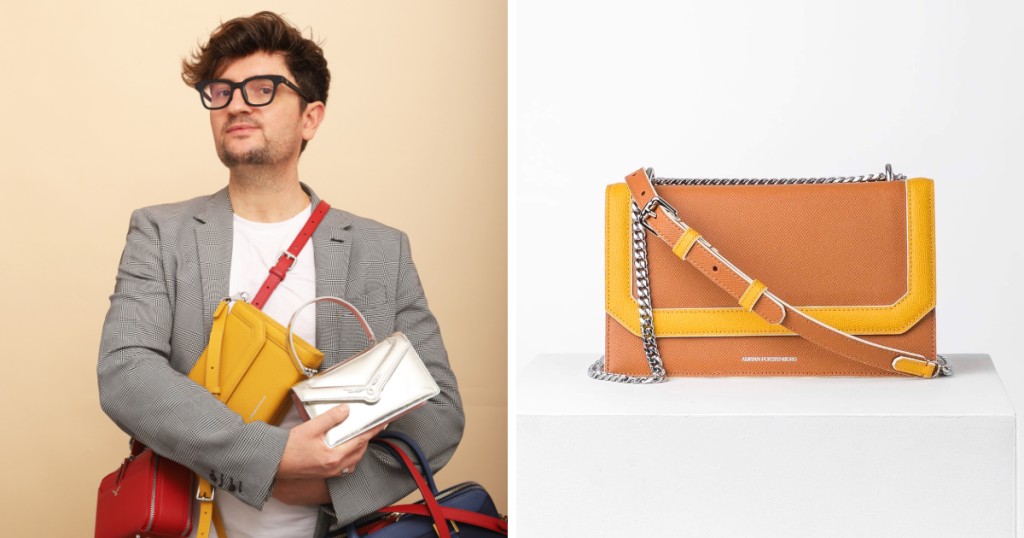
With its lab-grown leather ProjectEx tackles not only the issue of animal cruelty but that of environmental damage as well, removing the need for leather tanning. Traditionally, it’s this process which leads to excessive pollution and the creation of toxic waste.
“Harsh chemicals and thousands of litres of water are used to remove fat and muscle from skin during regular leather production, which is one the biggest contributors to environmental impact and waste,” Furstenburg told Vulcan Post. “Because we are building the product cell up, we will effectively be deleting this part,” added Furstenburg
The startup is also looking into innovative methods which reduce the impact of the colouring and finishing stages of leather processing.
Is it the real deal?
Traditionally, exotic leather has been a luxury product and thus comes the question: will a substitute be accepted by consumers?
Vegan leather products have faced similar challenges in the past, with countries including Portugal, Italy, and France banning the use of the term for marketing purposes. This decision was made with the rationale that the term was misleading and provided a false description.
Furstenburg believes that this won’t be an issue because lab-grown leather, by all definitions, is the same as its traditional counterpart. The only difference is that animals don’t need to be slaughtered in the process of creating it. That being said, there may be a need to clarify misinformation as consumers might instinctively lump lab-grown leather with its vegan and fake counterparts.
Within the industry itself, there has also been a “definite rise in interest for sustainably and ethically sourced products,” Furstenburg adds weight to his argument. “However, the very first port of call is aesthetics.” While ProjectEx aims to champion cruelty-free products, it must also ensure that they are appealing to the eye.
As a show of confidence, Furstenburg reveals that ProjectEx is already in discussions with known brands for the use of its products. “We will most probably start within the watch brand space, move into small leather goods and handbags after that.”
Featured Image Credit: ProjectEx / Unsplash
Also Read: How this S’pore AI startup is transforming the marketing sector by automating content creation
This Japanese moved to KL to open a matcha shop in Pavilion that uses a 300 Y/O tea brand
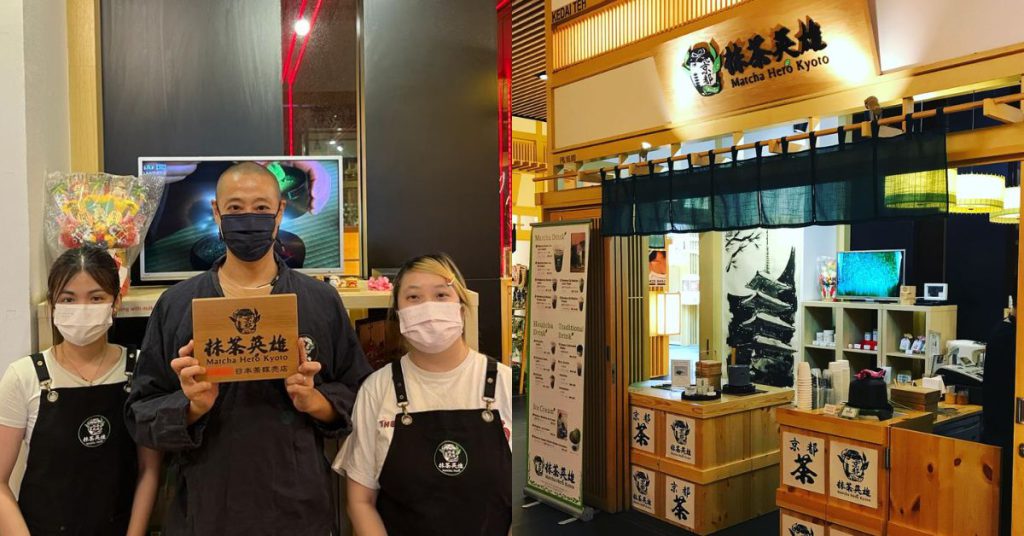
Whenever I visited Pavilion KL as a young teenager from Melaka, Tokyo Street on the sixth floor was a must-visit.
There, I would find delicious Japanese restaurants, a huge Daiso, and unique little kiosks selling things I could often never afford.
And then there was Matcha Hero Kyoto (Matcha Hero), a small stall selling matcha products. I remember being able to get their matcha ice cream and finding the cool dessert to be rich, smooth, and absolutely scrumptious.
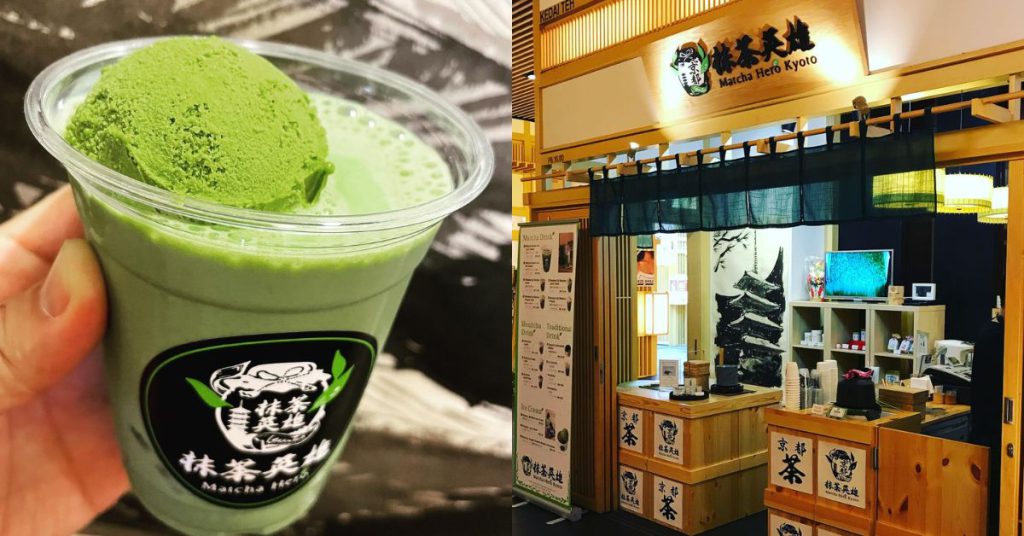
Today, Matcha Hero remains a stalwart on Tokyo Street, even as other kiosks around it shift and change.
To find out how the brand has been sustaining itself over the years, I reached out to learn more from the Japanese founder himself, Masahiro Onishi.
The hero himself
Growing up in Japan, Masahiro, who goes by Masa, has always been familiar with the operations of a business.
His parents owned a small retail shop in Japan selling cosmetics and school uniforms, and as they lived right above it, he was very familiar with how they worked.
“One of my dad’s hobbies was having a traditional tea ceremony, and sometimes, he would serve tea to his friends and customers,” he shared with Vulcan Post.
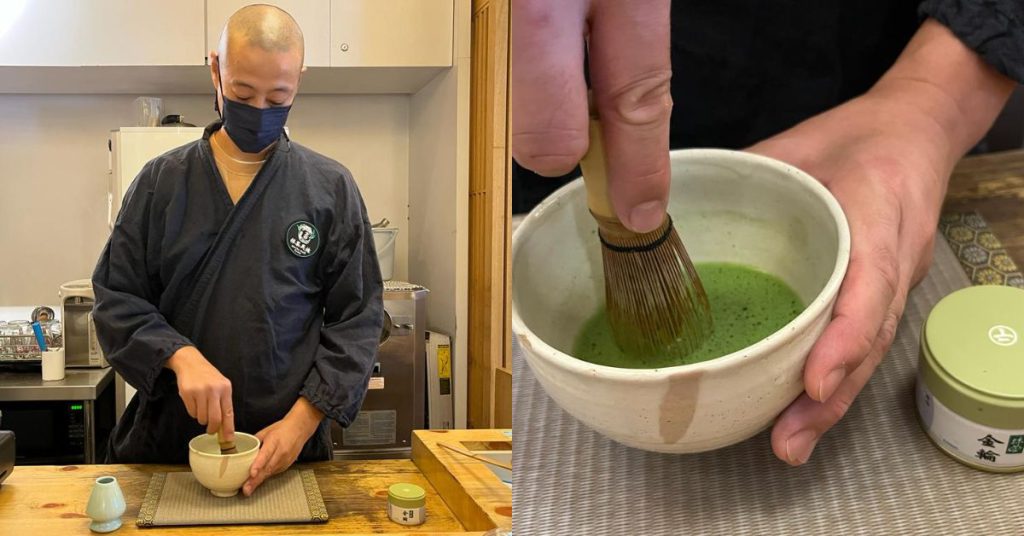
After graduating from university, Masa worked at a Japanese department store in Kyoto. He worked there for around 10 years and experienced different roles in shop and floor management, marketing, and more.
“When I was in the marketing team, I met a Japanese designer called Takakura-san, who planned to join a fashion event which was held at Pavilion KL,” he shared.
Interested to learn about the Malaysian mall scene, Masa decided to tag along with Takakura-san’s trip. Here, Takakura-san introduced Masa to Mitsu-san, who had worked with the Pavilion KL management team for a long time.
After getting to know Masa, Mitsu-san told him, “If you want to challenge something new, you should try.”
His advice got Masa thinking, and he began to cook up a business idea.
“The potential of Pavilion KL was very attractive for me,” he said. “I’ve had experience managing retail stores in the department store, and the shop size of Matcha Hero is small (110 sq ft). So, I had no fear in starting Matcha Hero.”
Further emboldened by Mitsu-san and Takakura-san’s support, Masa decided to set up shop in Malaysia by starting his business at Pavilion KL.
A purveyor of matcha
When coming up with a business idea, Masa had a few keywords in mind.
Firstly, that it should be Japanese products. He also wanted it to be a simple operation so that the quality can be standardised and that it should cater to a wide age range, since it’s located in a shopping mall.
“Green tea matched all of my keywords,” Masa realised.
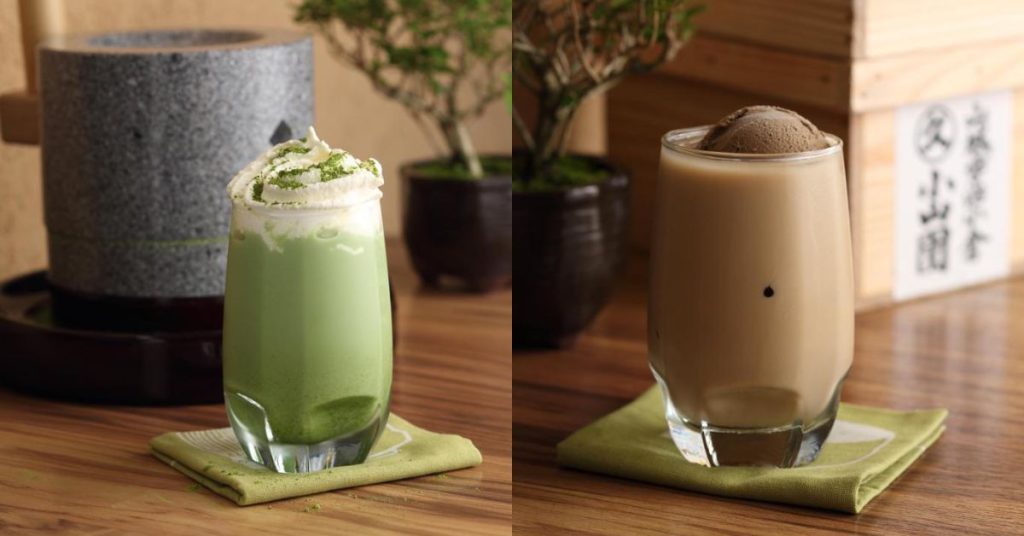
During his time at the Kyoto department store, Masa had formed a connection with Marukyu Koyamaen, a well-known tea brand with over 300 years of history. It was the perfect brand for Masa to partner up with and bring over to Malaysia.
“So, I explained to them that I wanted to start a Japanese tea shop at a shopping mall in Malaysia by using Marukyu Koyamaen products,” he said.
Trusting Masa, Marukyu Koyamaen agreed to the collaboration, and till this day, Masa loyally uses its products for his brand.
That said, Matcha Hero uses its own recipe to adjust the taste and price to the Malaysian market.
Given the product and the keywords Masa wanted, Mitsu-san had suggested Tokyo Street as a prime location to start his business. Established in 2011, Tokyo Street is like a Little Tokyo area found on level six of Pavilion KL.
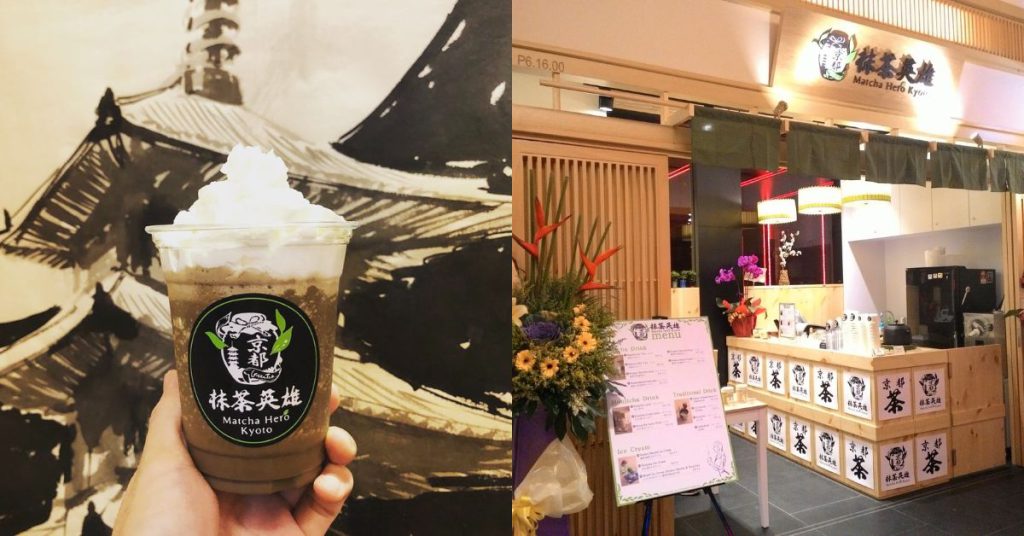
“Very popular stores like Daiso, Ichizen, Shojikiya, etc. were already at Tokyo Street, so I believed that Tokyo Street was already well known by many customers,” the founder recalled.
Matcha Hero began its operations in January 2015, tucked in the cosy but bustling Tokyo Street.
Growing the matcha scene
When Matcha Hero started in 2015, the matcha scene locally hadn’t been all that robust, though Masa recalled seeing a few other Japanese tea brands around.
Nowadays, brands such as Niko Neko have become commonplace, supplying to various cafes in the Klang Valley and even beyond.
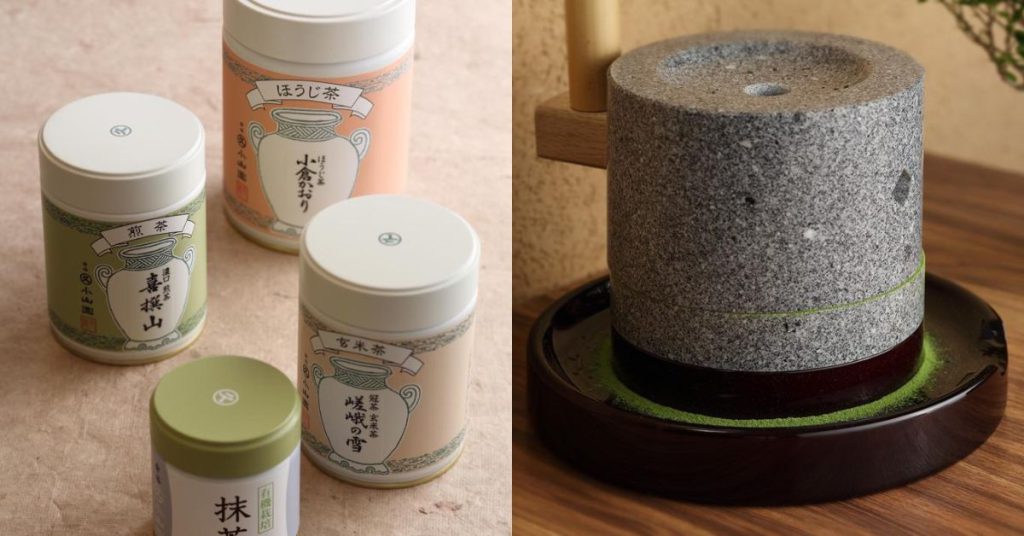
Other brands that have started up since Matcha Hero’s establishment include Oh Cha Matcha, Matcha Eight, and more. Most cafes nowadays will also have a matcha option, and it seems more popular than before to prepare matcha at home, too.
Yet, Masa feels confident in his products, and more specifically, the Marukyu Koyamaen brand of products used at Matcha Hero.
The founder also sees the growing landscape as a win for matcha lovers in Malaysia.
“Each matcha brand in Malaysia has its own originality or identity, and has been served with a high quality for a long time,” he said. “So, I think customers can feel relieved to be able to drink matcha everywhere in Malaysia.”
Here to stay
After a challenging pandemic when they were not able to operate, the team has updated its signature drink recipe to produce a stronger tea flavour.
Matcha Hero has also started its delivery efforts by receiving orders via WhatsApp, something inspired by the pandemic era.
“We couldn’t operate our outlet during the MCO, so that was a hard time for us to continue the business,” he shared. “But during that period, there were new home bakers and pastry clients who started take-away businesses.”
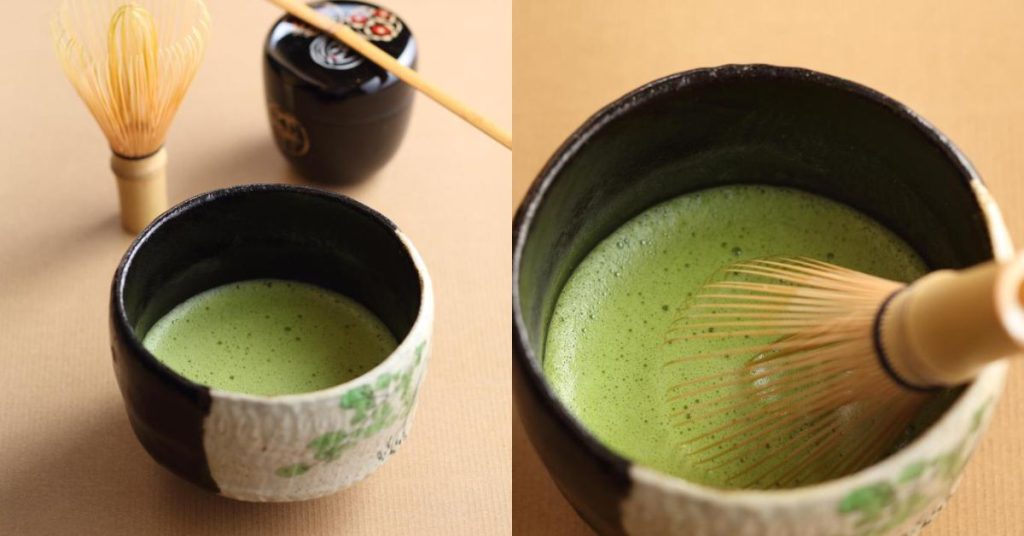
Moving forward, rather than focusing on the Matcha Hero brand, Masa’s focus lies more on being an authorised distributor for Marukyu Koyamaen as a tea brand in Malaysia, and maybe even abroad.
“There are lot of great cafes and restaurants in Malaysia who like our tea products,” he explained. “So we want to stay behind the scenes and keep supplying at a stable quality.”
With that priority in mind, Masa has no plans on expanding Matcha Hero, at least for the time being.
“The goal of Matcha Hero is to always be there for our customers. Matcha Hero always wants to stay behind the scenes of the people who need Japanese tea,” he reiterated.
It’s heartening to know that even as more stores in Tokyo Street come and go for the foreseeable future, Matcha Hero will remain where it always has been, serving up reliably delicious matcha treats.
- Learn more about Matcha Hero Kyoto here.
- Read other articles we’ve written about Malaysian startups here.
Also Read: This M’sian brand has sustained itself with just one fizzy honey beverage for 6 years
Featured Image Credit: Matcha Hero Kyoto
Meet the M’sian baker who is introducing Russian desserts to locals at her cafe in Puchong
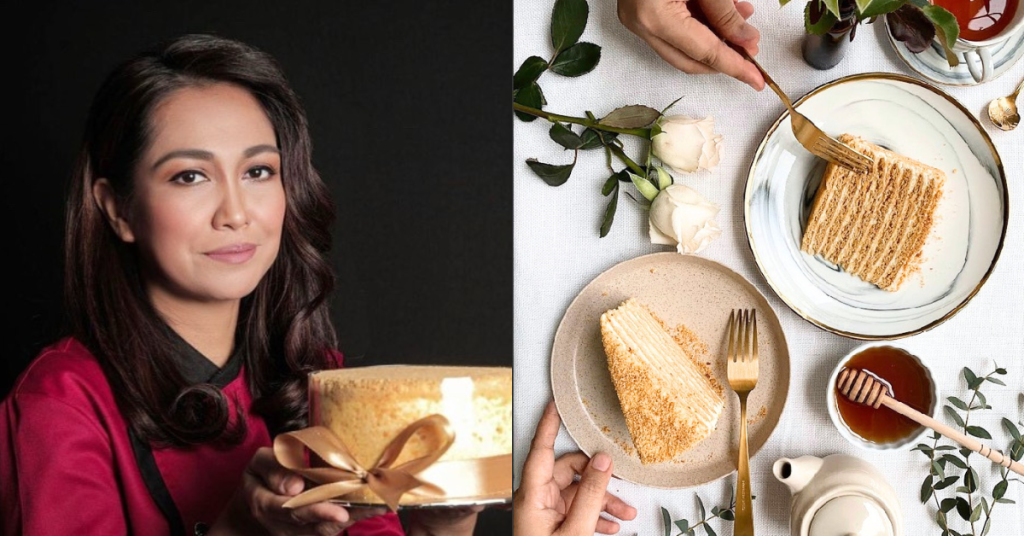
Malaysia is home to a diverse group of local and international citizens such as those from Africa, Europe, and the Middle East.
One way this is evident is the blend of cuisines that’s easily found in the Klang Valley from European restaurants to Arabian bistros.
However, surprisingly, it’s not that that common to come across an F&B business serving Russian cuisine. In hopes of changing that, Malaysian mum-of-four, Linda Rozlee, opened a cafe in Puchong called Torte by Linda.
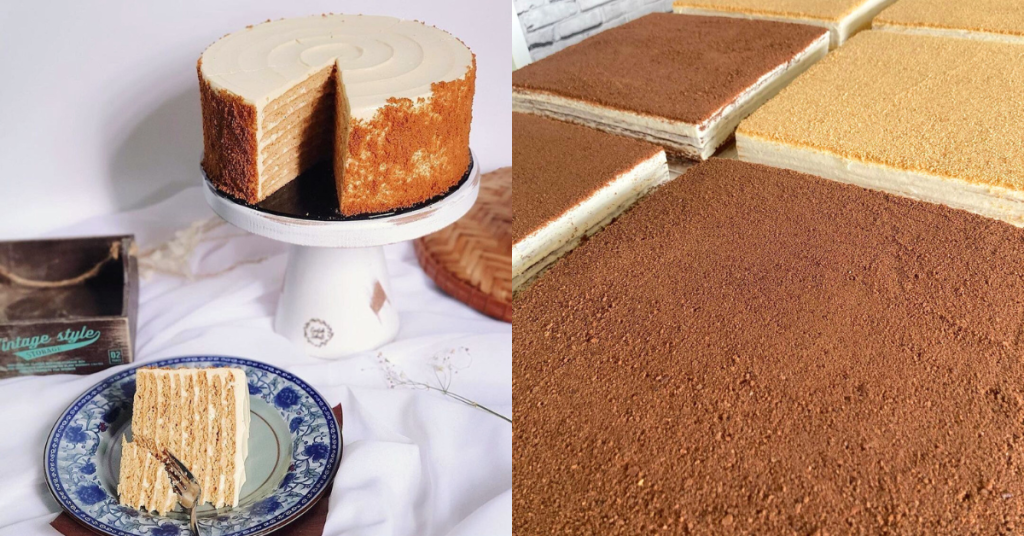
Laying the foundation for her newfound passion
As a frequent traveller, Linda had been exposed to the different food options available in various regions.
“One of my favourite things to do when I travel is trying different desserts in every country,” she said.
But it wasn’t until she visited Kazakhstan, Uzbekistan, and Ukraine that she found something that left a deep impression on her—Russian cakes and desserts.
It sent her on a baking journey of self-discovery. “I liked the desserts so much so that I became known as ‘Linda Medovik’ at one point,” she jokingly shared. Medovik is a layer cake popular in countries of the former Soviet Union.
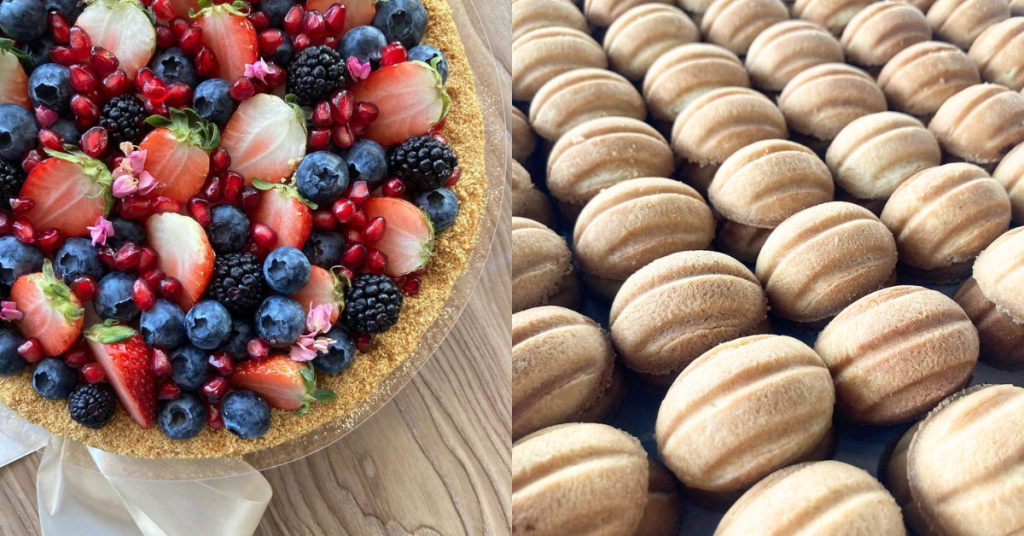
She first learnt how to make the desserts by watching YouTube tutorials on Russian channels. She got help from Google and her family from Kazakhstan to translate the recipes.
To perfect the art of creating these desserts, though, Linda returned to Shymkent, Kazakhstan to attend a few personal baking classes from notable chefs around the region.
This included baking professionals from Kazakhstan, Russia, and Ukraine, like Rustam Kungurov and Marusya Manko.
Taking in everything she learnt from them, Linda’s work became a blend of techniques from her gurus.
Not one to like treats which are too sweet, Linda tweaked the original recipes to suit both her own and the Malaysian palate.
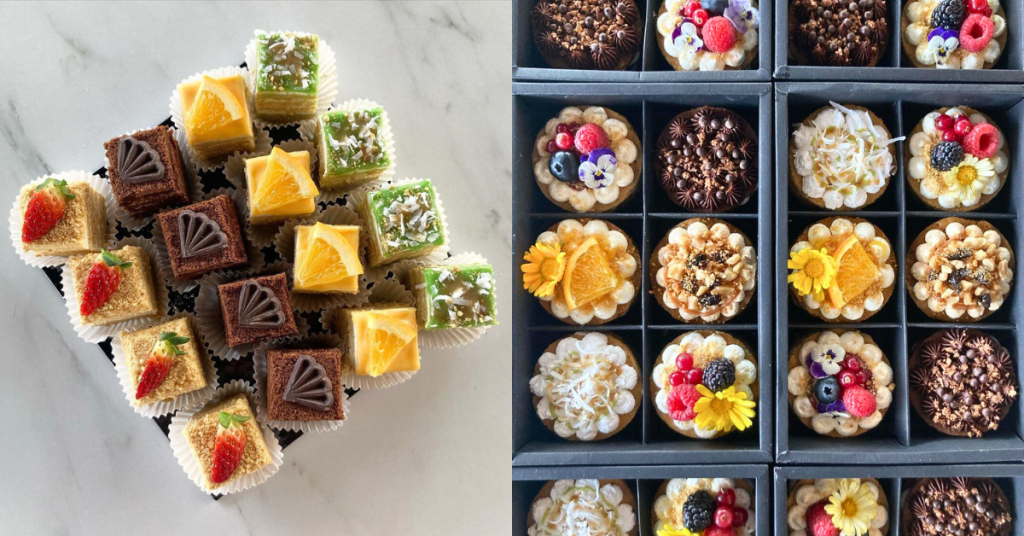
Once she was confident with her skills, she launched her cafe and at the same time, began supplying her treats to other F&B establishments in KL and Selangor.
Life’s batter with cake
All of Torte by Linda’s baked goods are made fresh and in-house.
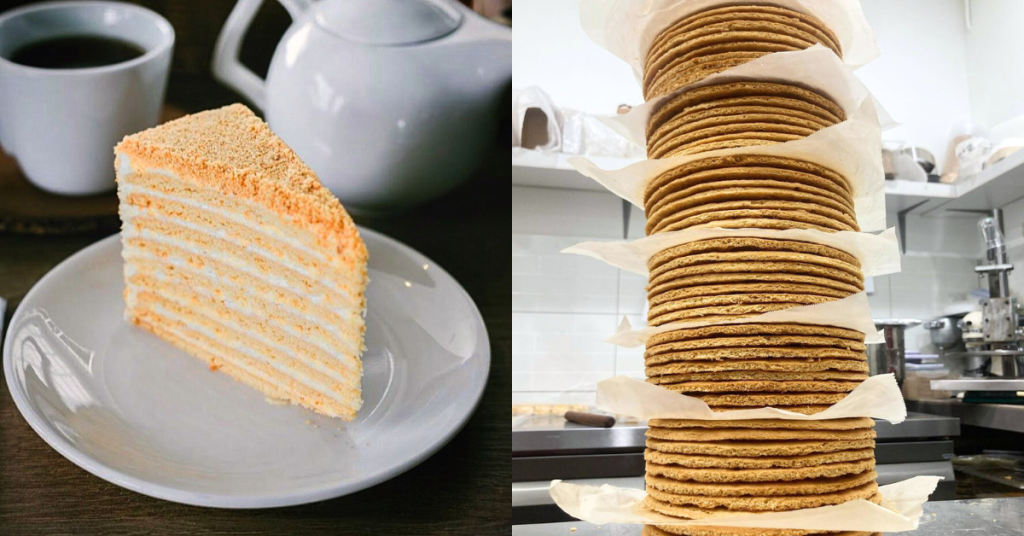
Torte by Linda’s best-selling and “must try” item, Tort Classic Medovik (Russian honey cake), also happens to be Linda’s preferred treat. Traditionally, the medovik is made by stacking layers of sponge cake and cream filling.
It’s said that each Russian household has their own recipe which has been passed down through generations, some with different variations that consist of nuts or chocolate, which Torte by Linda also sells.
But desserts aren’t all that they offer. Linda is committed to sharing Russian cuisine with Malaysians and has also included savoury dishes into the menu.
When she feels adventurous, she would experiment in the kitchen and make up new concoctions for savoury dishes and honey drinks.
So if you’re lucky, you could enjoy a new ad-hoc recipe when walking into the Puchong-based cafe.
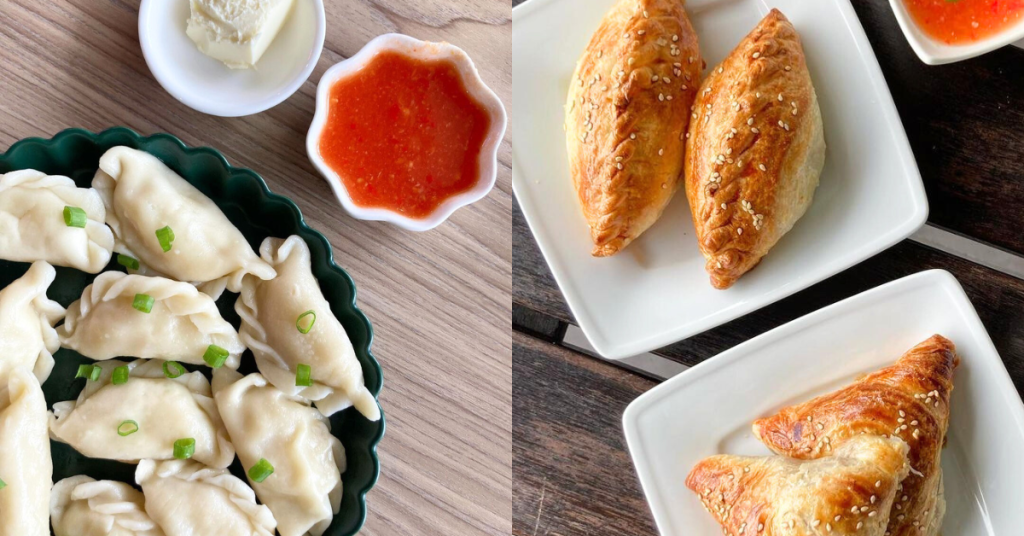
The introductory selections there include:
- Blini, a thin pancake usually served with sour cream, jam, or honey
- Syrniki, a fluffy cheese pancake made from farmer’s cheese
- Uzbek Samsa, a traditional buttery and flaky pastry filled with minced lamb that’s been soaked in fragrant spices and baked till golden brown
- Pelmeni, dumplings filled with meat or vegetables and served with sour cream and homemade chilli paste
- Russian Kompot, a non-alcoholic dessert beverage made from fruits and sweet sugar syrup
In the spirit of making these accessible to Malaysians, Torte by Linda’s offerings are all within the standard cafe pricing. A slice of Russian cake is priced at RM16, a combo of mini treats at RM50, and the savoury food starts from RM8.
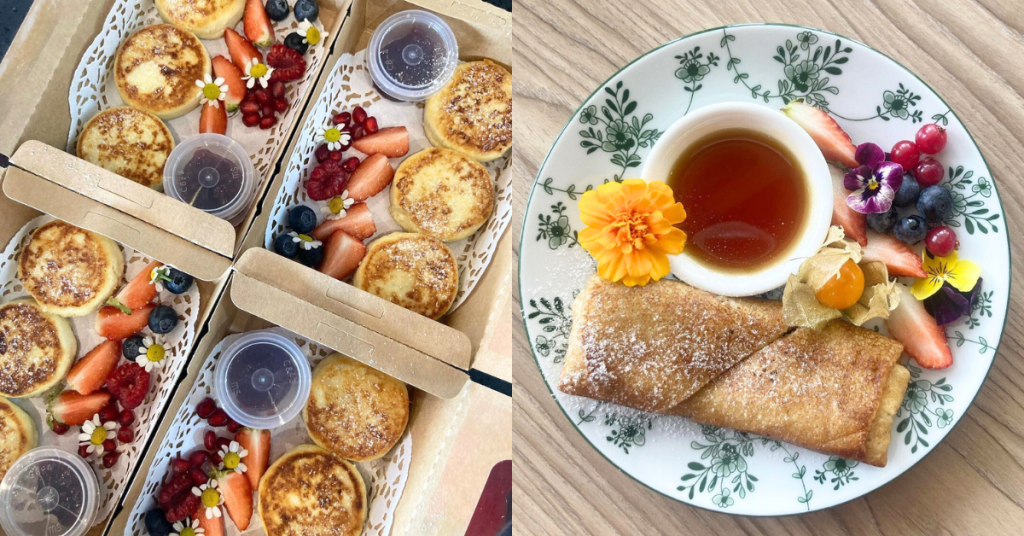
Aside from desserts and hot dishes, Torte by Linda is also home to a sister brand specialising in Russian honey. Linda’s Farm is another venture by the entrepreneur as a way of expanding the cafe’s offerings.
Speaking to Vulcan Post, Linda shared that Ukrainian and Russian honey is known for its “high quality and unique characteristics”, which accounts for its distinct flavour and aroma.
To her, the characteristics of honey from those regions make them ideal for baking her Russian desserts.
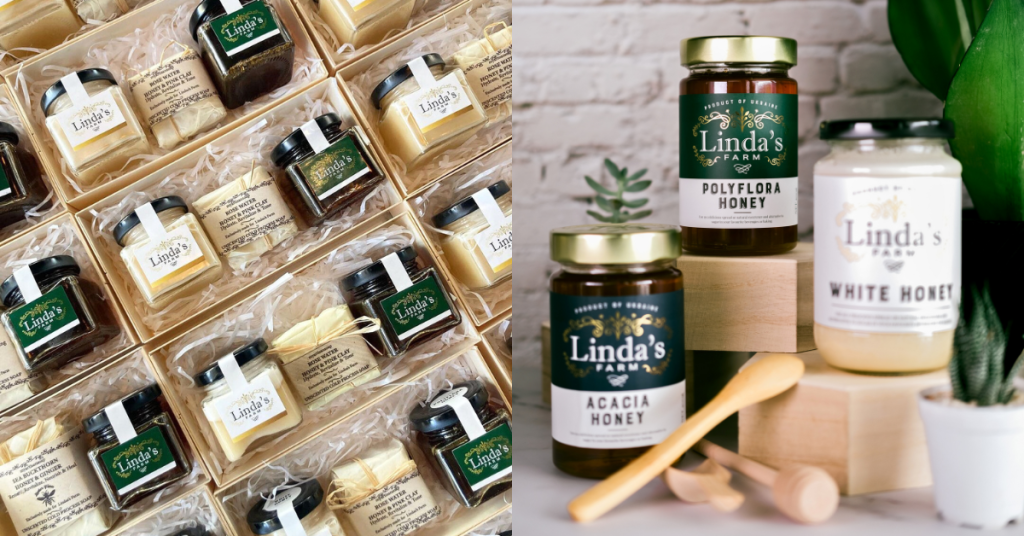
A slow and steady rise
Over the years, Torte by Linda has supplied its treats to establishments like Restaurant Astana, and Tims Teapot Terrace. Some of their customers also include governmental officials like the Turkmenistan embassy.
By establishing good relationships with Malaysia’s Russian and Central Asian communities, Torte by Linda also helps in promoting the products of these regions.
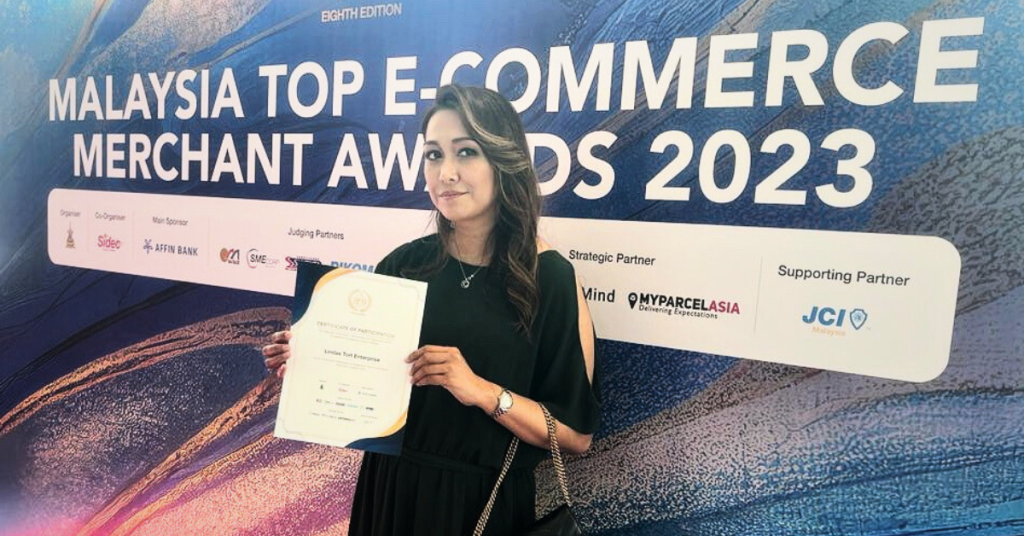
In continuation of her efforts to introduce Russian desserts to the local market, the brand is working to expand into KL. They also occasionally join pop-up events around the city, most recently at Isetan, KLCC and the Central Market.
But it’s not just the Klang Valley that she’s aiming for. Linda has her eyes on bringing her Russian treats to areas beyond, including her hometown of Penang and also Ipoh.
With those known as local foodie spots, Linda’s strategy to focus on these cities first seems like a wise move to achieve her bigger goal.
- Learn more about Torte by Linda here.
- Read other articles we’ve written about Malaysian startups here.
Also Read: When not cooking at a Michelin-starred spot, this M’sian is designing Japanese chef knives
Featured Image Credit: Torte by Linda
Bet you didn’t know Lingham’s Chili Sauce was founded in Penang 115 years ago
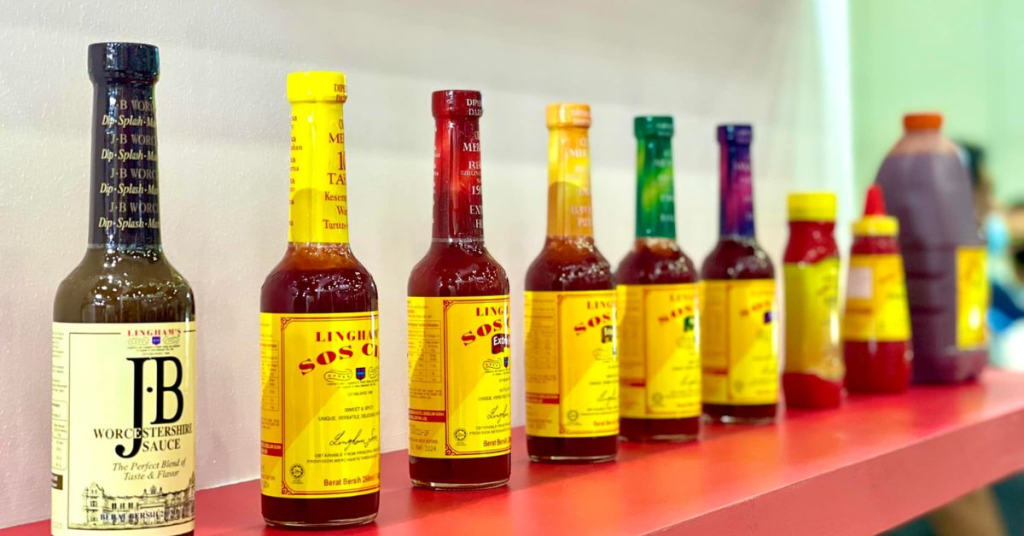
Ask someone what brand comes to mind when we say “chilli sauce” and you might hear names like Life, Kimball, Maggi, or maybe even Sriracha. (Ask our office though, and you’d hear a resounding call of “Sabasco!”)
While Lingham’s Chilli Sauce (Lingham’s) might be what you’d call a more underrated name locally, I feel like it appears to be well-loved globally. Perhaps even lesser known are its origins, which can be traced to Butterworth, Penang.
Here’s the story behind how Lingham’s became an award-winning chilli sauce that is being exported to over 20 countries all over the world.
Warming up the taste buds
The brainchild behind Lingham’s chilli sauce was an Indian man named Lingam who had come to Malaysia to start a business venture, its UK website states.
Understandably, he began missing the taste of home, so he started producing hot sauce in 1908 in Penang.
He made the sauce without using preservatives or artificial colours, and only four ingredients which were fresh chilies, vinegar, sugar, and salt. This, Lingham’s website claims, has not changed over the years.
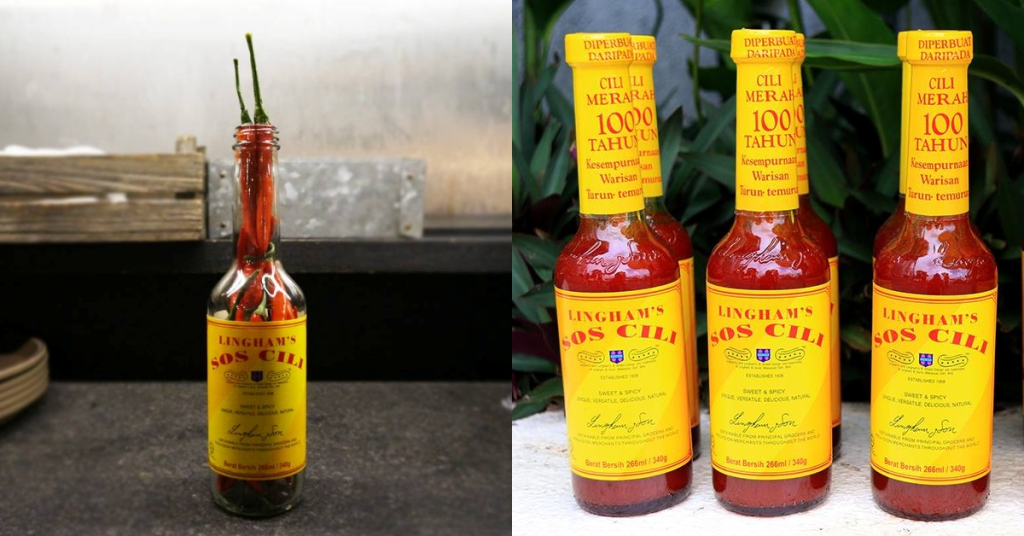
The sauce had apparently turned out so good that it had become not only popular amongst the local community but also well loved by the British Colonial expatriates in Penang.
By World War II, it had become so well-loved among the British that a bottle of the chilli sauce was included as part of every British officer’s war rations.
On how Lingam’s chilli sauce came to be known as “Lingham’s”, it is believed that this happened when Lingam consulted a British expat for product branding.
The expat pronounced it as “Lingham”, the way one would say “Nottingham” or “Billingham”. Somehow, that stuck, and became how the sauce’s name would be recorded in history.
Fresh new start
In 1945, after World War II, a Chinese clerk named Ooi Choo Hong, who worked at a British trading house called Henry Waugh Co. Ltd, made an offer to Lingham to buy the business from him, according to the History Channel Asia.
In exchange for the recipe, Ooi would provide Lingham with a way home to India. As Lingham was apparently feeling homesick, he agreed.
It is unclear what had happened to Lingham after he had sold the company to Ooi, but the name and the recipe were retained despite numerous changes to the business throughout the years.
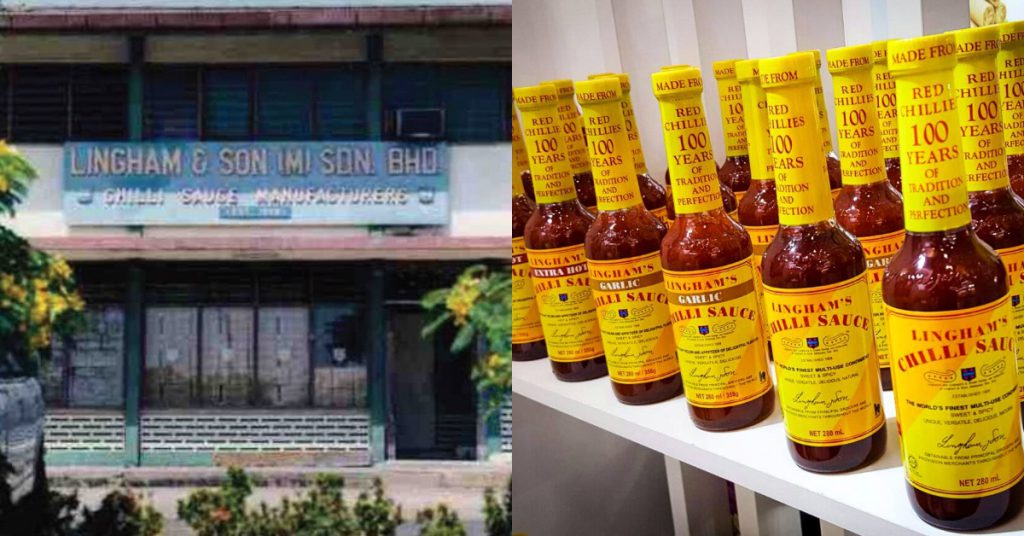
In 1971, it was incorporated into Lingham & Sons Sdn Bhd and moved its facilities from its factory in the Butterworth-based Mak Mandin plant to its new facility in Selangor.
The following year, Queen Elizabeth graced a trade show in Dewan Sri Pinang, Penang, where Lingham’s had a stall, History Channel Asia reported.
While there, she was presented with a box containing bottles of Lingham’s. After her return to the UK, a letter of appreciation was sent to Lingham’s from Buckingham Palace, and this marked a monumental moment for the brand.
The brand later began investing heavily into marketing overseas which eventually led to sales of the chilli sauce in the UK exceeding local Malaysian sales.
Today, Lingham’s products are available in over 20 countries around the world.
This includes the UK, Denmark, US, Canada, Australia, India, Kuwait, United Arab Emirates, Hong Kong, Japan, Singapore, Vietnam, and South Africa, to name a few.
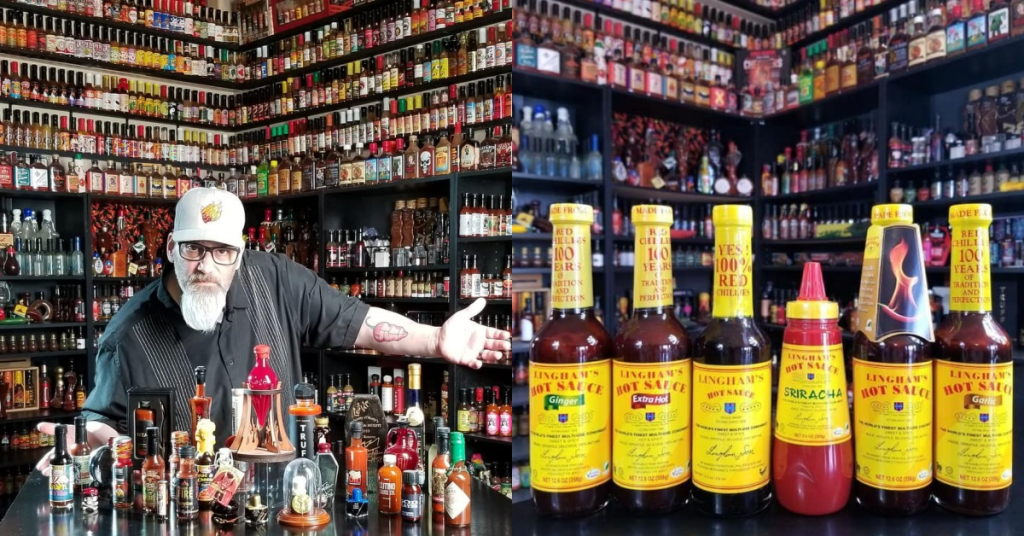
From its product range, it seems that the brand has since expanded to include more variations such as Lingham’s Extra Hot, Lingham’s With Garlic, Lingham’s With Ginger, Lingham’s Sriracha, and Lingham’s Worcestershire sauce.
All of their products are verified non-GMO, halal, and kosher, the Lingham’s website shows.
A Malaysian icon
In an interview with BERNAMA, Yeoh Jin Beng, the managing director of the current Lingham & Sons (M) Sdn Bhd, attributed the brand’s success to its originality, quality, consistency, integrity, and perseverance.
He said that Lingham’s longevity in history, way before competition stepped in, has somewhat strengthened its roots in the country.
“If not because of the deep root and history that it has, I think Lingham’s wouldn’t be here today. The difference between the old food manufacturer and today’s is their thinking of sales.”
“In the old days, people were thinking about how to survive. In order to be able to survive, the word integrity is there; the one that gives you the best product,” he explained to BERNAMA.
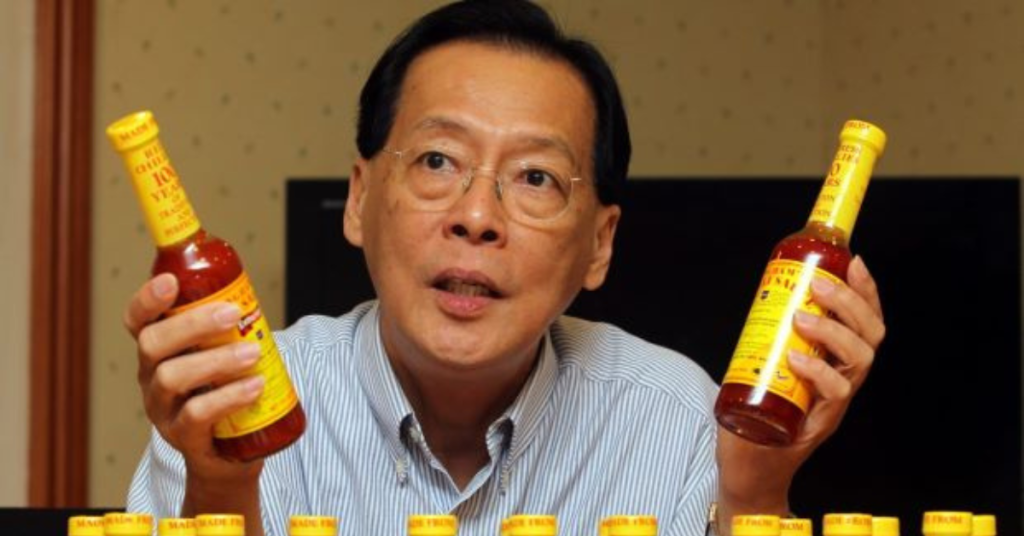
Yeoh also said, “We cook from the heart, not the pocket.”
Meanwhile, General Manager Wendy Ng Wan Loo said to BERNAMA that although competition sprung like “mushrooms after the rain” and created a stiff market, the increasing prices of raw materials were the biggest challenge.
In order to preserve the legacy of the brand, the company chooses to stay true to the original recipe. However, they admitted that it’s been a challenge to maintain the integrity of the brand while managing the costs. Still, they don’t believe in cutting corners even when times are tough.
“People ask me what Lingham’s market share is? I said zero because none in the market are original or almost natural. The rest are not really chilli sauce as they added starch and colouring. Lingham’s is the real chilli sauce,” concluded Yeoh.
That’s certainly a strong statement to make, but it’s a testament to how much the team believes in the quality of their product, and it’s likely this same belief by consumers that have kept the brand thriving a century later.
- Learn more about Lingham’s Chilli Sauce here.
- Read other articles we’ve written about Malaysian startups here.
Also Read: This M’sian brand has sustained itself with just one fizzy honey beverage for 6 years
Featured Image Credit: Lingham’s Chilli Sauce